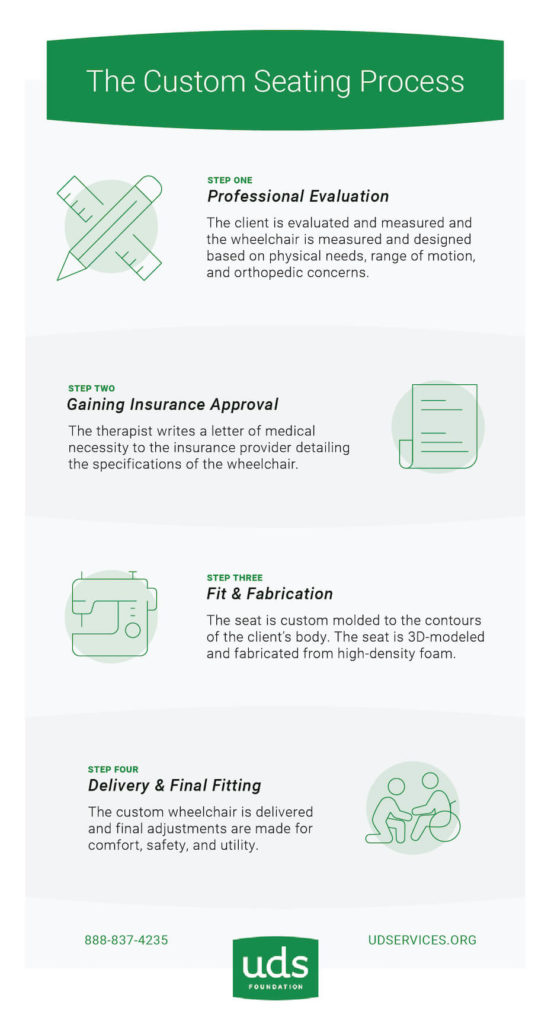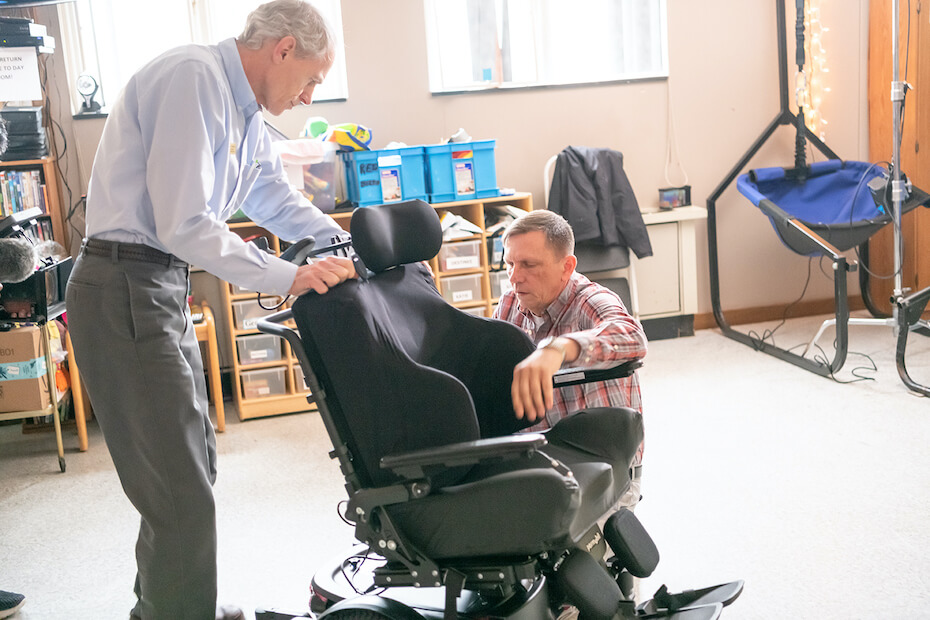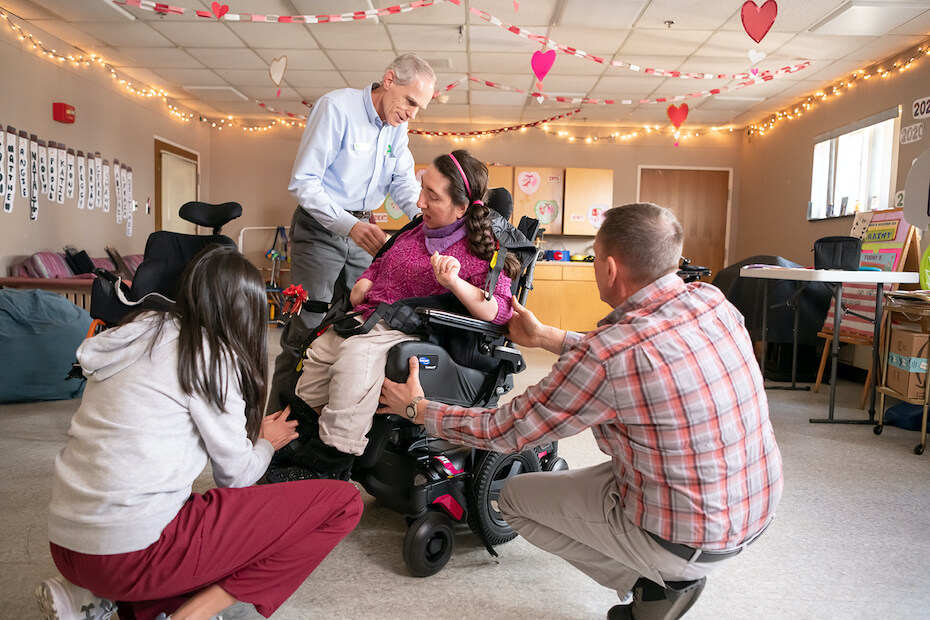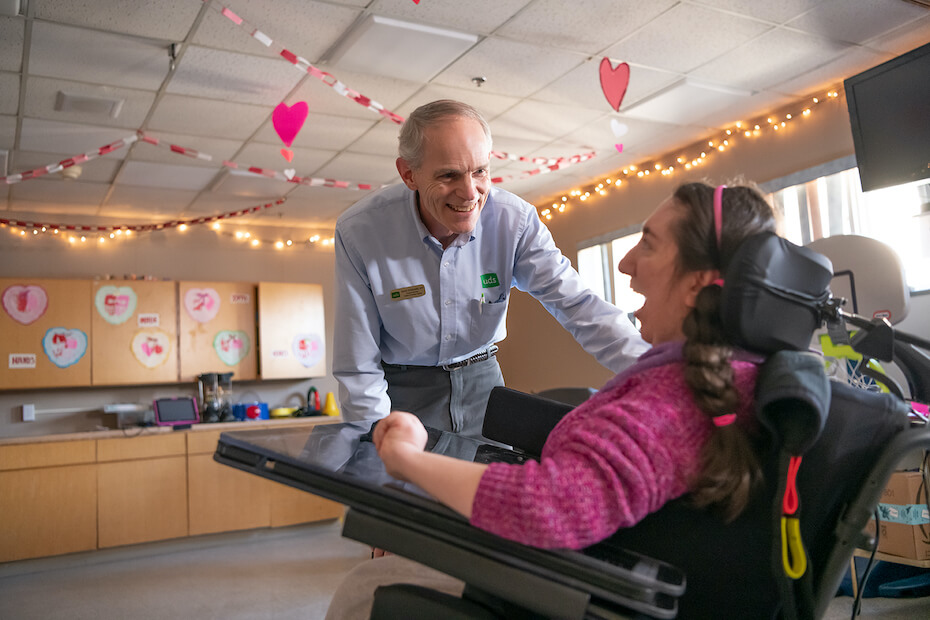You may have heard of complex rehabilitation technology (CRT) and durable medical equipment (DME), but do you know the difference between the two? For many people with disabilities, CRT and/or DME play a vital role in their everyday lives. In this blog, we’ll explore what CRT and DME are, who can benefit from them, examples of each type, and how to pay for them.
What is Complex Rehabilitation Technology?
Complex rehab technology is specialized equipment used by individuals with certain mobility disabilities. It’s designed to help you perform activities of daily living (ADLs) to the fullest extent possible so you can participate in everyday life. These ADLs may include grooming, dressing, toileting, cooking, ambulating, and communicating. Ideally, your CRT helps you perform these tasks safely, independently, and within a reasonable time frame.
Because it’s individually configured, CRT is designed to meet your unique physical and functional needs. It does this by supplementing or replacing certain functionalities, while also providing support surfaces for your back, legs, arms, and head as needed. Unlike manual or power wheelchairs, CRT offers individual seating and positioning and enhanced controls.
Here are a few of the most common types of complex rehab technology:
- Complex power chair systems
- Adaptive seating systems
- Alternative seating and positioning systems
- Highly-configurable manual wheelchairs
- Standing devices
- Gait trainers
At this point, complex rehabilitation technology wheelchairs are classified under Medicare’s durable medical equipment benefit. This can be problematic due to the evolution of CRT technology since these laws were initially drafted. In fact, many advocates have called for a separate Medicare category for CRT.
Physical Benefits of Complex Rehabilitation Technology
One of the biggest physical benefits of CRT is that its customized design helps prevent pressure injuries. People who are incontinent, can’t weight shift, or lack feeling in pressure areas often develop pressure sores. These can become serious when untreated, and often take several months of bedrest to cure.

Many people who use wheelchairs suffer from spine or postural issues as a result of spending so much time sitting down. This can limit their reach and cause secondary complications that prevent them from performing their ADLs. Because it’s custom-molded to the user’s frame, CRT helps prevent and/or correct spinal and posture-related problems.
Who Can Use Complex Rehabilitation Technology?
CRT is beneficial for people with congenital disorders, degenerative neuromuscular diseases, or who have experienced traumatic injuries/illnesses. These include (but are not limited to):
- Cerebral palsy
- Muscular dystrophy
- Spina bifida
- Multiple sclerosis
- Amyotrophic lateral sclerosis (ALS/Lou Gehrig’s disease)
- Traumatic brain and spinal cord injuries
Custom wheelchair seating systems can also be helpful for individuals who are able to ambulate, but do so with difficulty. A few examples include people who:
- Are at high risk for falls
- Cannot perform their ADLs in a timely manner
- Cannot consistently ambulate throughout the day
- Experience incontinence because they can’t reach the bathroom in time
- Experience an unsafe rise in heart rate during ambulation

UDS Can Help You Live A Fuller Life With Our Comprehensive Services:
Planning & Support – Our dedicated planning & support teams help manage the care and services you need.
Personal Care & Independence – We’ve helped people with disabilities live more independently in their own homes since 1965.
Enrichment & Life Skills – Our variety of programs is dedicated to building skills for living well with a disability.
How to Get Complex Rehabilitation Technology
Obtaining complex rehabilitation technology can be a complicated, time-consuming process. You’ll need to work with your physician, physical or occupational therapist, and a CRT supplier or assistive technology professional (ATP).
Here’s a step-by-step look at the process of obtaining complex rehab technology for yourself or a loved one:
- To start, a physical (PT) or occupational therapist (OT) must identify the need for CRT.
- Once the need has been identified, a physician, physician’s assistant, or nurse practitioner will assess the specific need for CRT.
- Your PT or OT will then perform a physical and postural assessment to determine your functional limitations and how they affect your ability to perform mobility-related ADLs.
- At this point, the PT or OT will complete a Letter of Medical Necessity (LMN) and submit it to your physician for approval. This document is also submitted to Medicare, Medicaid, or a private insurer, depending on your coverage.
- Once prior authorization is obtained, the PT or OT will contact a CRT supplier or ATP to discuss equipment options.
- Along with your PT or OT, you’ll meet with the supplier or ATP. They’ll bring trial equipment and a pressure map to help you choose the right CRT for your needs.
- Once approved, the supplier or ATP will fit you with your equipment and provide any necessary training.

Along with complex rehabilitation technology, many people with disabilities benefit from durable medical equipment (DME). Let’s take a closer look at DME and its relationship to CRT and custom wheelchair seating.
What is Durable Medical Equipment?
To classify as durable medical equipment, a device must be medically necessary and essential to your everyday life. DME should also:
- Be able to withstand repeated, daily use
- Not be useful to someone who isn’t sick or injured
- Have an expected lifespan of 3+ years
DME must be used at home, so it typically doesn’t include vehicle customizations. Home modifications typically aren’t covered, unless your insurance company declares them to be medically necessary.
Examples of Durable Medical Equipment
A wide variety of items fall under the classification of DME. You’ll find a few examples below:
- Automatic and manual wheelchairs
- Blood sugar monitors, lancets, and test strips
- Canes and walkers
- Catheters
- Cervical collars
- Custom orthotics
- Crutches
- Hospital beds and patient lift systems
- Kidney machines
- Nebulizers
- Oxygen equipment
- Prosthetics (both organs and limbs)
- Scooters

Paying for Durable Medical Equipment with Medicare
In most cases, DME is covered by Part B of original Medicare. However, if you’re a hospital inpatient or are in a skilled nursing facility, it’s covered under Part A. Medicare Advantage (also known as Part C) plans also cover DME.
Keep in mind that your DME will only be covered if your physician and supplier are enrolled in Medicare. Once your supplier accepts assignment, you’ll pay 20% of the amount approved by Medicare. The amount you pay will go against your Part B deductible.
Paying for Durable Medical Equipment with Medicaid
If you qualify for Medicaid, your DME will typically be covered through a Home and Community-Based Services (HCBS) waiver. These provide nursing home-level care to people still living at home. However, because they’re waivers — rather than entitlements — space is limited.
If you’re dually-eligible for both Medicare and Medicaid, Medicaid is the payer of last resort. If you’re a qualifying veteran, there’s a good chance your VA healthcare will provide DME. There are also grants for veterans whose disabilities aren’t a result of military service.
Paying for Durable Medical Equipment with Private Insurance
While they aren’t required to cover DME, many private insurers do. However, you’ll need a prescription from your physician. Depending on your plan, you may be required to rent your DME, as opposed to buying it. Whether you rent or buy is typically affected by how long you’ll be using it. Once your private insurer approves your DME, you’ll need to find an approved, in-network supplier.
Complex Rehabilitation Technology and Custom Wheelchair Seating from UDS
At UDS, we specialize in mobility and rehab equipment and custom wheelchair seating. Our Mobility and Rehab team, Custom Wheelchair Seating team, and Assistive Technology Professionals are here to help you find the right equipment for your needs.
We offer complex rehab, power, manual, and manual tilt-in-space wheelchairs. And our custom wheelchair seating process molds your chair to the curvature of your spine to decrease the risk of pressure sores and enable proper breathing and swallowing.
Check out the images below to see the custom wheelchair seating we created for Jenny!


